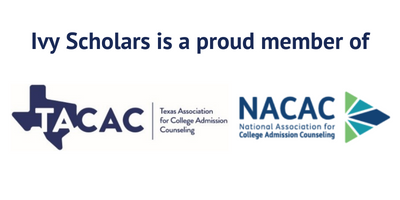Many high school students are talented artists, either working in visual mediums, or through music. This is commendable, and many students who don’t wish to pursue art or music professionally still have remarkable talents in these fields, talents that colleges often want to know about. To this end, many colleges allow students to submit art portfolios, collections of works or excerpts of performances to showcase their talents. These are distinct from the requirements for students who want to major in these fields, but are instead a way to showcase your unique skills to admissions officers. In this article, we’re going to review how these portfolios work, and the requirements top colleges have for their submission. Let’s jump right in!
Art Portfolios and Auditions for Art Majors and Non-Art Majors
The first thing to clarify is the difference between optional arts portfolios and required art admissions materials. For most colleges, if you are majoring in art or music, there is a separate supplement you are required to include, highlighting your artistic works or serving as an audition. Dance and theater programs often require live auditions; music either live or pre-recorded.
Art portfolios, on the other hand, are optional collections of work submitted by non-majors, meant to highlight a talent in a field they excel in, but do not wish to major in. How these are used in admissions varies a lot by college, but they can be a nice addition to an application if you have genuine skill to showcase.
These are not something to include for no reason; art and music portfolios, even those submitted by non-majors, are generally evaluated by art and music faculty for skill and artistic merit. An excellent portfolio can greatly help your chances, a mediocre one can hurt them. They are less impactful than a full audition piece or portfolio for majors, but since they are optional, you should only include one if it will definitely showcase the best of what you’re capable of.
Art Portfolios at Top Colleges
Art portfolios are not nearly as standardized as the Common App, though technological and practical necessities mean there are a lot of parallels in how colleges handle them. Here’s a table showcasing how top colleges require students submit art and music portfolios, along with other notes on the process.
| College | Portfolio Submission | Notes |
| Boston College | SlideRoom | Only students majoring in art should submit portfolios through SlideRoom. Students interested in doing music or theatre at BC may submit a portfolio through SlideRoom regardless of intended major. |
| Boston University | SlideRoom | Only students applying to the College of Fine Arts are asked to submit portfolios. |
| Brandeis | None | Not accepted |
| Brown | SlideRoom | Both music and visual art submissions are accepted. Music may submit images, video, and audio, art solely images. Both should include a brief written statement. |
| Caltech | Applicant Portal | Any non-STEM talents can be submitted; they allow for both images and videos. |
| Carnegie Mellon | SlideRoom | Only allowed for applicants to the College of Fine Arts, other students may not submit a portfolio. |
| Case Western | Applicant Portal | Required for art and music majors, but they accept art, music, and dance portfolios from all applicants. |
| Columbia | SlideRoom | Required for students applying to the combined program with Juilliard; others students may optionally submit a creative portfolio.All forms of visual and performing art accepted. |
| Cornell | Applicant Portal | Some colleges accept music supplements; regardless of major, they ask you only submit these if you plan to substantially involve yourself with music at Cornell. |
| Dartmouth | Applicant Portal | You should indicate you intend to submit a portfolio on your Common App; they are accepted for any major. Portfolios accepted for dance, theater, music, and visual arts. |
| Duke | SlideRoom | These are optional, but should show a high level of talent. They accept music, dance, theater, or film submissions, but not visual art. You can include a brief artist’s statement. |
| Emory | Applicant Portal | These are optional, but may include any artistic talents you have, to be reviewed by admissions officers. |
| Georgetown | Applicant Portal | Students with a particular talent may submit portfolio materials directly to the relevant department, performing arts or visual arts. They do not make admissions decisions, but weigh the merit of the submission. |
| Georgia Tech | Applicant Portal | Only students applying to specific majors may submit portfolios. Other applicants may not. |
| Harvard | SlideRoom | They accept arts supplements for music, dance, and visual art for students with a remarkable talent they wish to demonstrate. |
| Johns Hopkins | Not Accepted | Not Accepted |
| MIT | SlideRoom | All submissions reviewed by faculty in the relevant department, performing and visual arts accepted. Only students planning to study those fields should submit materials. |
| Northwestern | Applicant Portal | These are only accepted for students applying to the Bienen School of Music, for which they are required. |
| Notre Dame | SlideRoom | Students intending to major in art, theater, or music are encouraged to submit a creative portfolio. |
| Princeton | Applicant Portal | Indicate you wish to include a portfolio on your Common App; you will then receive the link to submit one via your portal. They accept visual and performing arts supplements. |
| Rice | Applicant Portal | Music, architecture, and art students may submit portfolios through their student portal. Other students may not submit portfolio materials. |
| Stanford | Applicant Portal | Any students with a talent for arts may submit a portfolio. It is encouraged but not required for students who wish to study art, and allowed for students not majoring in art. |
| Tufts | Applicant Portal | Only for students applying to SMFA at Tufts. |
| Tulane | Applicant Portal | These are not required for admission, but any student may upload a portfolio. All portfolios are reviewed by admissions officers, and may greatly strengthen applications to certain majors, or qualify students for particular merit scholarships. |
| UC Berkeley | Not accepted | Not accepted |
| UC Irvine | Applicant Portal | Required for students majoring in art, dance, theater, or music. Otherwise not accepted. |
| UCLA | Applicant Portal | Required for art, music, dance, theater, and architecture, otherwise not accepted. |
| UC San Diego | SlideRoom | Optional, only accepted for students majoring in art, music, or theater/dance. |
| UNC Chapel Hill | Applicant Portal | Generally not accepted for admissions, but several scholarships require auditions. |
| UChicago | Applicant Portal | They accept visual art, theater, dance, and music supplements. |
| University of Michigan | SlideRoom/Applicant Portal | Most students may not submit art portfolios. Students applying to Stamps must submit a portfolio through SlideRoom. Students applying to SMTD must submit pre-screening materials, and must then audition. |
| UPenn | Applicant Portal | Only students applying to Digital Media Design may submit a portfolio; they are encouraged to do so. |
| University of Rochester | Applicant Portal | You may optionally link to a digital portfolio through your student portal. |
| USC | SlideRoom | Certain schools or majors require a portfolio. This is always handled by school and major. Art, music, dance, theater, film, and architecture students are required to submit portfolios. |
| UT Austin | Applicant Portal | Certain schools or majors require a portfolio or audition. This is determined by the particular school or department. Students not applying to those programs may not include an artistic portfolio. |
| Vanderbilt | Not Accepted | Not Accepted |
| Wake Forest | Not Accepted | Not Accepted |
| WashU | SlideRoom | All students are permitted to submit arts portfolios, but those applying to major in art are required to submit them. |
| Yale | Applicant Portal | All students may submit art portfolios, whether or not they intend to major in art. Faculty members in the relevant field will review these portfolios. |
This showcases the truly wide variety of how colleges deal with arts supplements. This is perhaps unsurprising, just as each college asks for different things in their supplemental essay questions, so too does each want something different from arts supplementals.
We do want to note that many colleges limit portfolios to students majoring in the arts, but this is far from universal. If you do plan on majoring in the arts, however, a portfolio (and/or audition) is essential; see our guide for art students for more information on approaching and acing these components.
Should You Include an Arts Portfolio?
Now that we’ve covered the schools that accept arts portfolios, the obvious followup is whether or not you should consider including one of these with your own application. The answer is, of course, that it depends. We will give some advice based on various possible circumstances, and when one of these will best help your application.
Portfolios for Majors
If you are planning on majoring or minoring in the arts, then you should consider including a portfolio, even if it isn’t required (which it often is). Just as students who want to study engineering are encouraged to take part in engineering extracurriculars, budding artists are encouraged to actively engage with their art, to explore their own unique style and voice.
Some art programs require portfolios, others do not, but we always advise students studying art (performing or visual) to submit a portfolio. This is especially true for schools where portfolios are reviewed by relevant faculty, such as with MIT.
Level of Skill and Talent
Many colleges request specifically that you only include an arts supplement if you have a serious body of work or talent you wish to show off, something that would add meaningfully to your application. They are somewhat vague on what actually qualifies for this, but overall, you should only include an arts portfolio if your work has gained significant attention already.
If your paintings have received acclaim, you’ve performed your music in packed venues, or your dancing won a medal at YAGP or a scholarship to a prestigious summer program, then it is worth including. In most cases, simply describing activities through your activities list and essays is sufficient. The arts supplement is for those times when your skill and artistic expression cannot be done justice with words alone. One of these won’t generally harm you if it isn’t up to snuff, but it will only contribute to your chances of acceptance if it is truly impressive.
What to Include
The final question then is what you should include. Each college has their own requirements, but it’s generally 10 or so images, or a few short video or audio pieces for performing arts. You should work with your art teachers (regardless of medium) to determine what should be included.
You should always focus on recent work. Artists grow and develop over time, and your most recent pieces are most likely to showcase your current milieu. If you are submitting a range of pieces, then showcasing your depth and breadth of style is worth doing if possible.
Artist Statements
Some colleges allow you to include a brief artist statement with your works. You should consult with your art teacher when drafting this. The point of these statements is to speak to the meaning of your pieces; why you made them, what they represent, and what they mean to you. Art is highly individual, and art statements are meant to help share your perspective on the art you have created.
A Brief Note on AI and Art Portfolios
Most colleges will not allow AI generated images, or other AI generated works, in art portfolios. A small number of colleges will allow images partially generated with AI, but only if that is one tool used in a larger artistic process. Images solely generated with AI may not be submitted, and any use of AI must be clearly credited and described.
This holds true for other works as well; music composition, film, architecture. Just as when evaluating college essays, top colleges want to receive works solely created by you, without the input or guidance of generative AI. AI generated music is mentioned significantly less, but this is likely due to its relative novelty; it should also not be included in these portfolios.
Final Thoughts
Art is an important part of many students’ lives, from the dancers who spend every hour in the studio, to the musicians who feel their soul in the notes, to the painters who craft worlds out of dreaming. Recognizing this, colleges want to see it, to better understand these students and the world they live in. While art portfolios are certainly optional, they are an important aspect of the application process for some students.
We hope this article has given you insight into how to approach art portfolios, and what top colleges are (and aren’t) looking for with them. This is but one aspect of a larger application, but it can be an important one. If you are looking for advice on whether or not you should put together an art portfolio, or on any other aspect of your college application, then Ivy Scholars can help. Our mentors have a wealth of experience in every aspect of the admissions process. Schedule a free consultation today to learn more; we’re always happy to hear from you.








